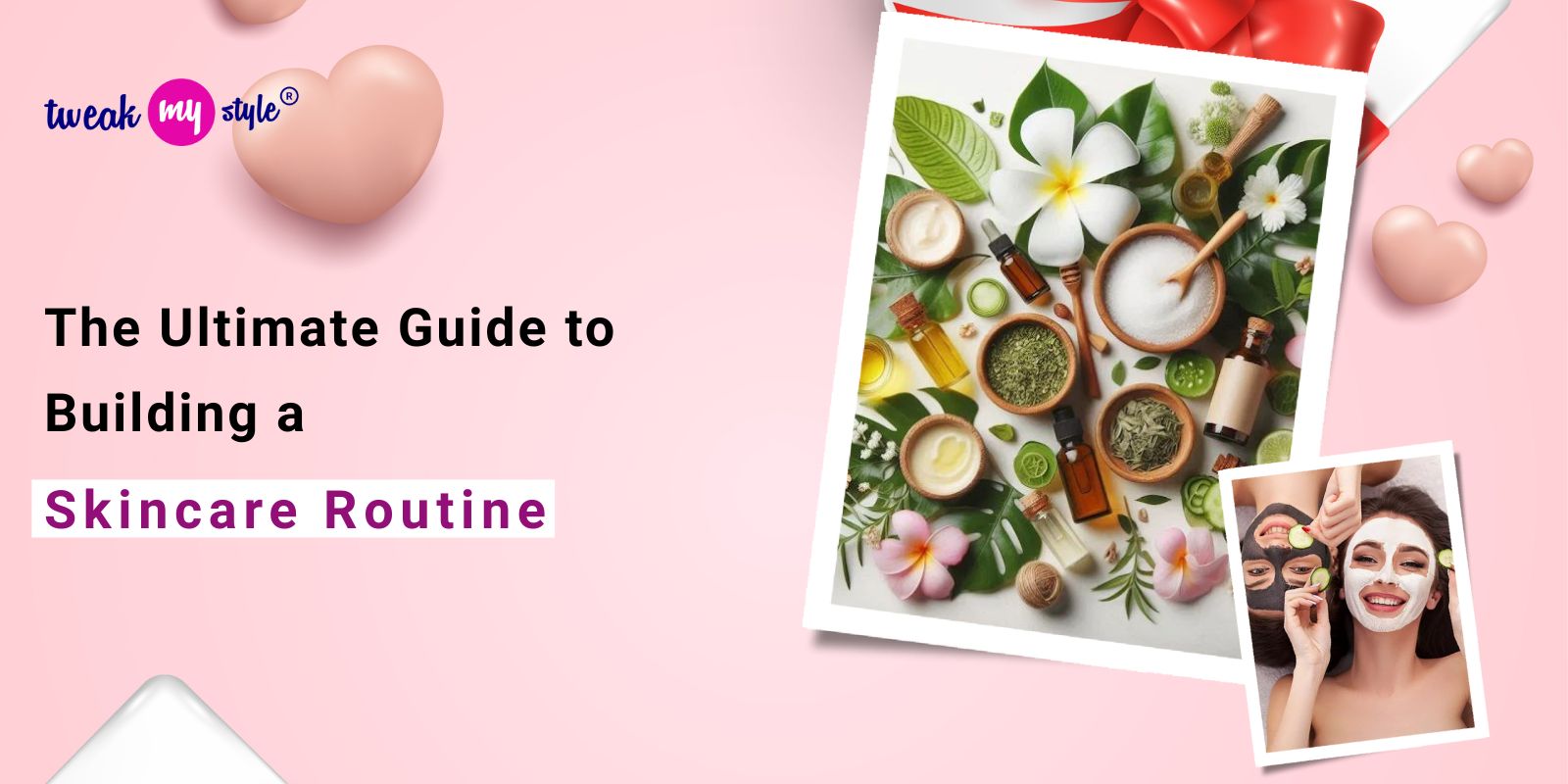Building a skincare routine can feel overwhelming. With countless products promising miraculous results, where do you even begin? This isn't about chasing perfection; it's about understanding your skin and building a simple, consistent routine that nurtures its health and radiance. This skincare routine guide will break down everything you need to know, from understanding your skin type to choosing the right products and troubleshooting common concerns.
1. Understanding Your Skin: The Foundation of a Good Routine
Before you even think about buying that fancy serum, you need to understand your skin type. Misdiagnosing your skin can lead to using the wrong products, exacerbating problems rather than solving them.
- Normal Skin: This skin type is balanced – not too oily, not too dry. It has a smooth texture, few imperfections, and good elasticity. If you're lucky enough to have normal skin, you have a good baseline to work from.
- Oily Skin: Characterized by excess sebum production, oily skin often appears shiny, especially in the T-zone (forehead, nose, and chin). It's prone to breakouts, enlarged pores, and blackheads.
- Dry Skin: Dry skin lacks moisture and can feel tight, flaky, and itchy. It often appears dull and may be more prone to fine lines and wrinkles.
- Combination Skin: This is the most common skin type! Combination skin has areas of both oily and dry skin – typically an oily T-zone and drier cheeks.
- Sensitive Skin: Sensitive skin is easily irritated by products and environmental factors. It may react with redness, itching, or burning. This isn't strictly a skin type but a condition that can overlap with any of the above.
How to Determine Your Skin Type:
- The Bare-Faced Test: Wash your face with a gentle cleanser and pat it dry. Don't apply any products. After 30 minutes, observe how your skin feels and looks. Is it shiny all over (oily), tight and flaky (dry), a mix of both (combination), or comfortable and balanced (normal)?
- Consider Environmental Factors: Your skin type can fluctuate based on the season, climate, and hormonal changes.
2. The Core Components of a Skincare Routine: The Essentials
Every good skincare routine, regardless of skin type, should include these core components:
- Cleanser: Removes dirt, oil, makeup, and pollutants.
- Moisturizer: Hydrates the skin and helps maintain its moisture barrier.
- Sunscreen: The MOST important step! Protects your skin from harmful UV rays, preventing premature aging, sun damage, and skin cancer.
3. Building Your Routine: Step-by-Step
Let's break down a basic routine, then we’ll explore additions.
A. Morning Routine:
- Cleanse: Use a gentle cleanser suitable for your skin type. (See product recommendations below).
- Serum (Optional): Serums deliver concentrated ingredients deep into the skin. Vitamin C serums are popular for morning use due to their antioxidant properties, protecting against environmental damage.
- Moisturize: Even oily skin needs moisture! Choose a lightweight, non-comedogenic moisturizer.
- Sunscreen: Apply a broad-spectrum sunscreen with an SPF of 30 or higher every morning, even on cloudy days. Reapply every two hours if you’re exposed to sunlight.
B. Evening Routine:
- Makeup Removal (If applicable): Use a dedicated makeup remover, especially for eye makeup.
- Cleanse: Double cleansing is often recommended, especially if you wear makeup or have oily skin. This involves using an oil-based cleanser followed by a gentle cleanser.
- Treatment (Optional): This is the time for targeted treatments like retinoids, acne spot treatments, or exfoliating acids. Start slowly and gradually increase usage as tolerated.
- Moisturize: Choose a richer, more hydrating moisturizer for nighttime.
4. Product Recommendations Based on Skin Type
- Normal Skin: Gentle foaming cleanser, lightweight moisturizer, broad-spectrum sunscreen.
- Oily Skin: Gel cleanser, oil-free moisturizer, salicylic acid cleanser (1-2x/week), clay mask.
- Dry Skin: Cream cleanser, rich moisturizer, hydrating serum (hyaluronic acid), facial oil.
- Combination Skin: Gentle foaming cleanser, lightweight moisturizer, spot treatment for oily areas, hydrating mask.
- Sensitive Skin: Fragrance-free cleanser, hypoallergenic moisturizer, soothing serum (centella asiatica), patch test all new products.
5. Beyond the Basics: Incorporating Advanced Skincare
Once you’re comfortable with the core routine, you can consider adding these ingredients and treatments:
- Retinoids (Retinol, Retinaldehyde, Tretinoin): Powerful anti-aging ingredients that promote cell turnover, reduce wrinkles, and improve skin texture. Introduce slowly and use only at night. Consult a dermatologist for prescription retinoids.
- Exfoliants (AHAs, BHAs, PHAs): These ingredients remove dead skin cells, revealing brighter, smoother skin. Start with lower concentrations and use sparingly, as overuse can irritate the skin.
- Hyaluronic Acid: A humectant that draws moisture from the air to hydrate the skin.
- Vitamin C: An antioxidant that protects against free radical damage and brightens the skin.
- Niacinamide: A multi-tasking ingredient that reduces redness, minimizes pores, and strengthens the skin barrier.
- Peptides: Help stimulate collagen production and improve skin firmness.
- Masks: Provide targeted treatment for specific concerns (hydration, clarifying, soothing).
6. Common Skincare Mistakes and How to Avoid Them
- Over-Exfoliating: Leads to irritation, redness, and dryness.
- Using Too Many Products at Once: Can overwhelm the skin and lead to reactions. Introduce new products one at a time.
- Not Patch Testing: Always test new products on a small area of skin before applying to your entire face.
- Ignoring Your Neck and Décolletage: These areas are just as susceptible to aging as your face.
- Squeezing Pimples: Can lead to scarring and infection.
- Not Drinking Enough Water: Hydration is essential for healthy skin.
7. Seeking Professional Help
- Dermatologist: For persistent skin concerns like acne, eczema, or rosacea, a dermatologist can provide diagnosis and treatment.
- Esthetician: Can provide facials and professional skincare treatments.















Share this post on: